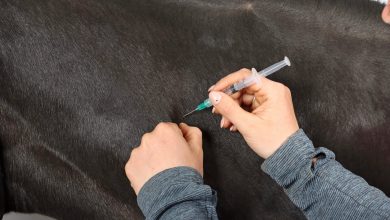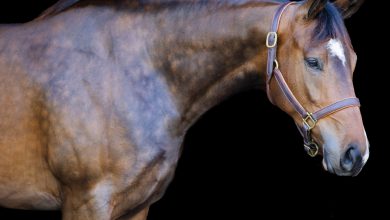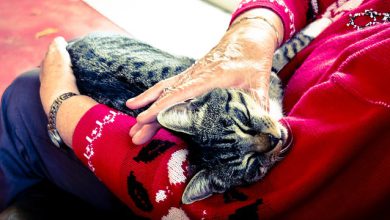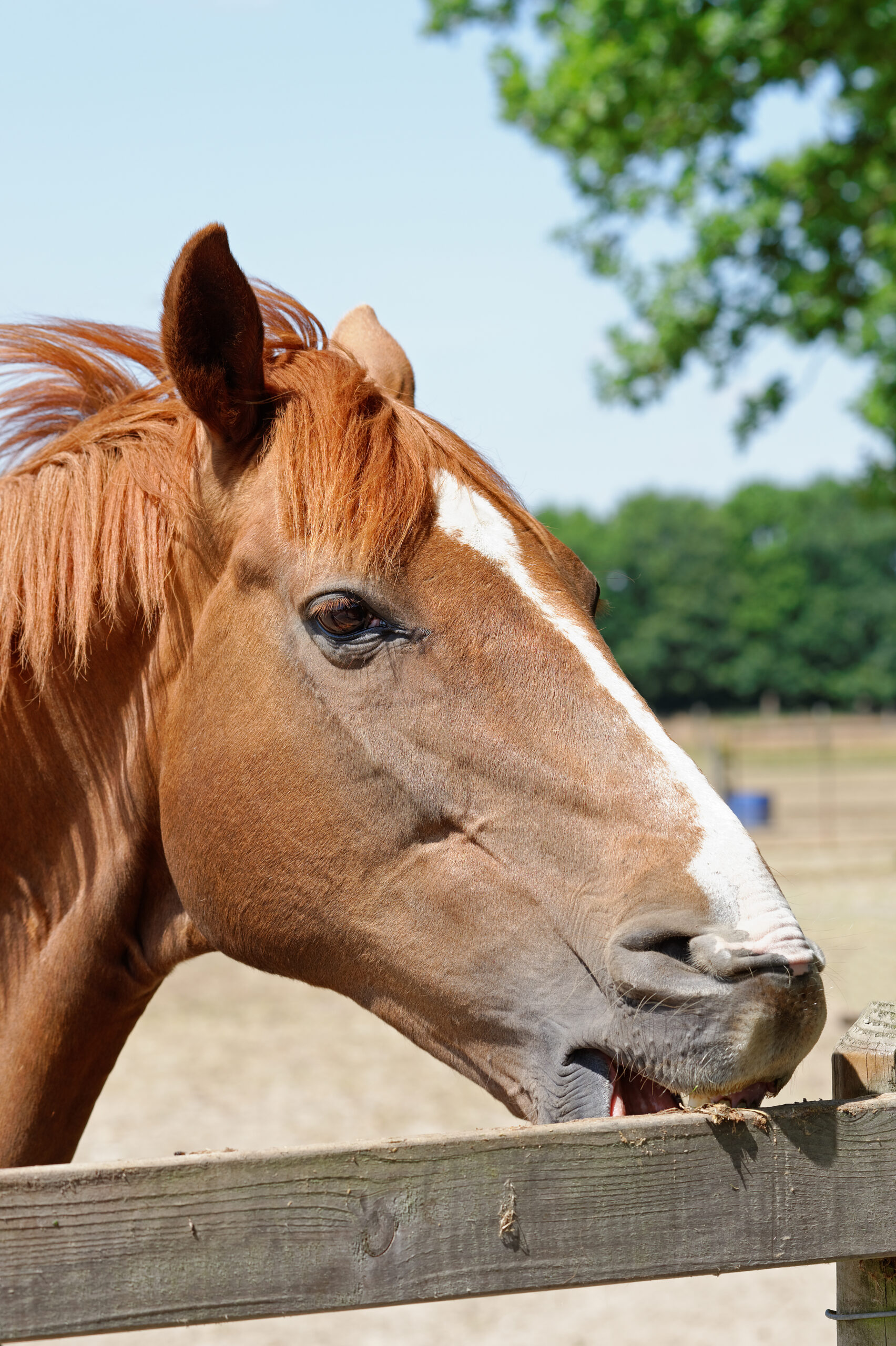
You step outside and see your horse exhibiting some odd behavior. He’s holding onto a fence with his front incisors and seems to be pulling back. You rush down to him, and notice he’s also sucking air in. If you haven’t seen a horse cribbing before, it can be a startling thing. If you have a cribber in your barn, knowing why he’s doing this and how to treat it, can save you (and him) headaches down the road.
Read on to get the lowdown on cribbing and solutions.
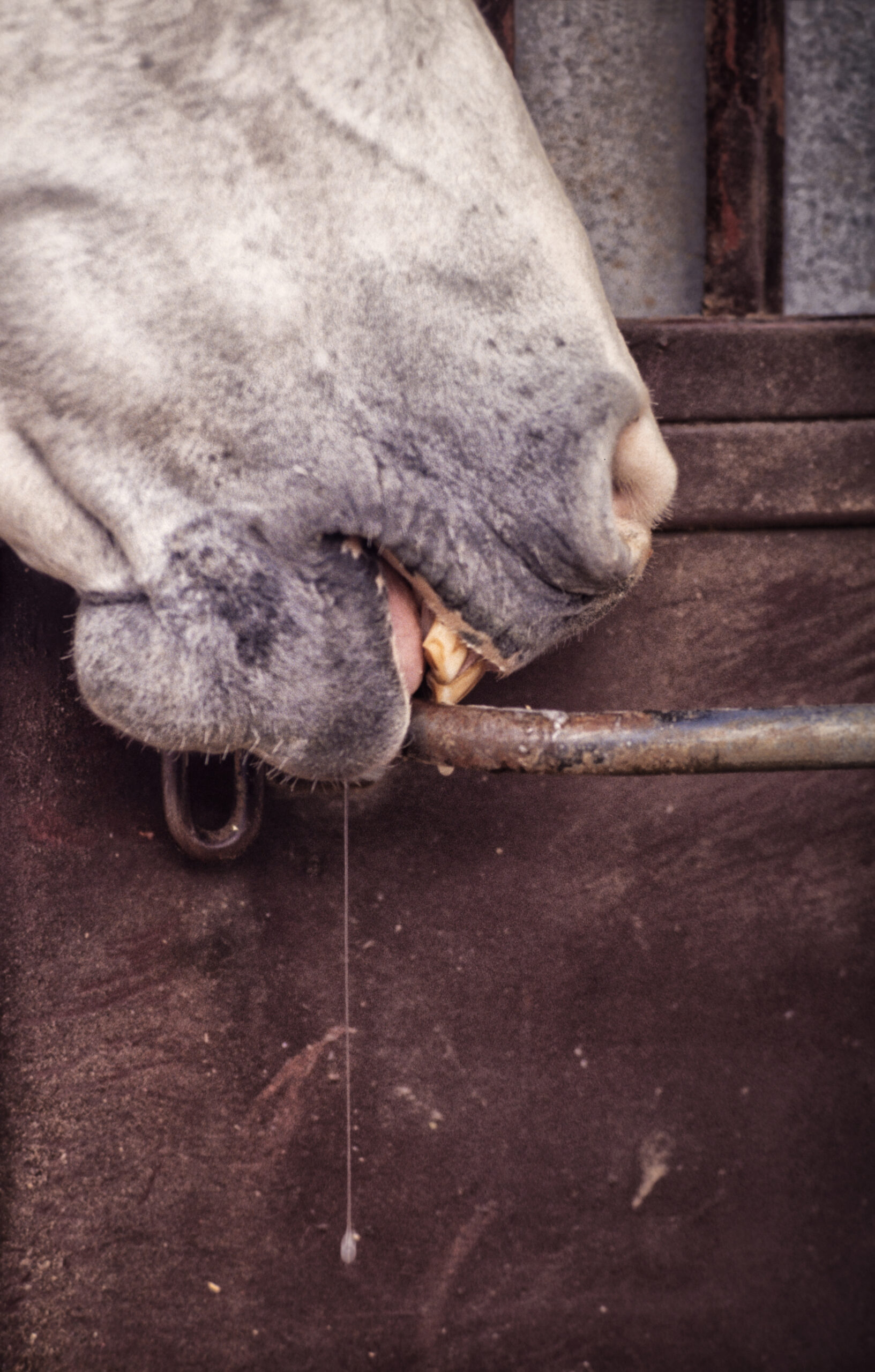
What is Cribbing?
Cribbing is thought mainly to be a learned coping mechanism to stressors in the environment. It can also be indicative of boredom, or simply a habit. It involves holding front teeth onto an object, such as a wooden fence line, and pulling back, while sucking air in, or just standing there.
Usually, the horse accompanies this behavior with a glazed-over expression, or grunting. Often, people will observe their horse chewing wood and associate it with cribbing. Wood chewing is also a boredom behavior, but it involves both upper and lower teeth nibbling on surfaces. Cribbing involves the upper incisors only.
Causes of Cribbing
Cribbing has not been documented in wild horses. Therefore, we call this behavior “stereotypical,” because it’s a learned behavior within our domestic herds and is considered abnormal for their adaptive evolution. Other stereotypical behaviors in horses include weaving, stall-kicking, and stall aggression, to name a few.
[Read About Other Stable Behaviors]One single cause has not been identified for why horses become cribbers, but nutrition and genetics are at the top of the list. With stress, confinement, and lack of enrichment also listed as serious risk factors. The behavior, once learned, is considered highly addictive. There are both high levels of cortisol and endorphins found in horses who are chronic cribbers. So, adaptive coping with secondary addiction is thought to engrain the behavior patterns. If the environment allows for surfaces to crib on, then a chronic cribbing horse will usually continue to crib unless intervention occurs.
Seek Solutions Using the Five Freedoms of Animal Welfare
When we seek solutions to behaviors, try to address the questions related to the five freedoms. Ask yourself: does the horse have this, and can we provide it if not?
Five Freedoms of Welfare:
- Freedom from hunger and thirst.
- Freedom from discomfort.
- Freedom from pain, injury, or disease.
- Freedom to express normal behavior. *
- Freedom from fear and distress.
*A note on freedom to express normal behavior: this includes but is not limited to having the opportunity for positive social interactions, herd dynamics, 24/7 access to forage/ slow feed hay nets, forage and turnout opportunities, enrichment in the form of positive interactions with people and work, enrichment in the form of stall toys, lick mats, treat balls, etc.
Other Solution Options
Once you have addressed the Five Freedoms, and ruled out pain, boredom, injury, or discomfort, you can look into alternative solutions. Two of the most commonly used solutions involve alternative fencing options, and cribbing collars. Electrical fencing can help reduce the access to a cribbing surface. However, sometimes the determined cribbing horse will still find the tiniest possible surface to grab ahold of and crib away.
Collars stop cribbing behavior in some horses. However, some chronic cribbers will crib while wearing a collar no matter if they are properly fitted or not. Some horses will figure out how to escape from a cribbing collar, and some environments are not appropriate for horses to be wearing a collar, such as 24/7 unsupervised pasture turnout, due to the risk of possible entrapment.
Collars can be helpful, but also addressing the underlying factors that might be causing the behavior is extremely important as well. Some horses who stop cribbing with a collar but are still experiencing chronic stress can start performing other undesired behaviors. These can include weaving, which can lead to sleep deprivation.
Cribbing Collar Fit
If you opt to use a cribbing collar, you will want to ensure it is fitted properly to avoid injury or discomfort. How tight a collar should fit largely depends on the type of collar, but in general, they should be snug, without causing any breathing issues.
They should not prevent the horse from turning his head, nor from eating or drinking. It’s advisable to supervise a horse when adapting him to a cribbing collar to make sure he can perform his normal horse functions and is not overtly stressed by the collar. He may need to ease into wearing a cribbing collar until he’s used to it. Horses that wear cribbing collars 24/7 and/or inappropriately, can experience hair loss, tissue damage, and nerve dysfunction.
Dangers of Unchecked Cribbing
If your horse is a chronic cribber, and you don’t take action to quell the problem, there could be long-term effects. Chronic cribbing can lead to incisor damage and wear. The horse will also have an addictive behavior or may be expressing a form of chronic stress or depression.
Other risks include temporohyoid osteopathy osteoarthritis which affects the temporohyoid joint. As well as pain of the masseter muscles and jawline, and poll and neck pain. If your horse is cribbing due to stress, this can also increase risk of stomach ulcers, which subsequently increases the risk of colic.
It should be noted that there are cribbers that might suffer none of these side effects. And those that will continue to crib without any issue.
If you witness cribbing behavior in your horse, start to try and rule out possible causes. Communicate your concerns with your vet and employ the experts to help you create a game plan to keep your horse happy and healthy.

